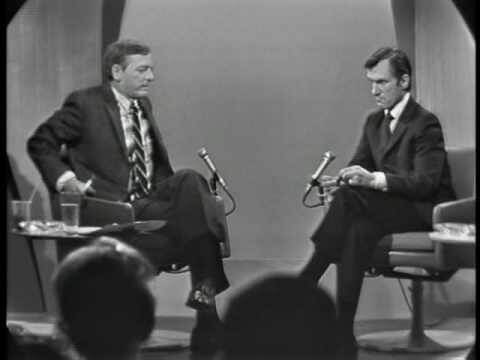R.I.P. Hugh Hefner

Hugh Hefner, the man whose synthesis of cultural curation, in-depth interviews, and softcore pornography helped make Playboy one of the most iconic publications of the 20th century, has died. According to The Hollywood Reporter, Hefner was 91 years old, and reportedly died of natural causes in his home, the famous, (or, possibly, infamous) Playboy Mansion.
Springing from a Midwestern, wholesome background armed with nothing but an $8,000 investment (including a hefy donation from his mom), a number of literary contacts from his old Esquire magazine days, and the certainty that someone, somewhere, would pay him for the privilege of looking at naked pictures of Marilyn Monroe, Hefner burst onto the scene with the first issue of Playboy (formerly Stag Party) in 1953. Selling more than 50,000 copies, the issue didn’t just launch a media empire; it laid the groundwork for the idea of the Playboy Man—an ideal Hefner threw himself into embodying with the deep-seated fervor of the self-made mythologist.
Hefner’s vision of Playboy—and of himself—extended far past the tawdry trappings of the average skin mag. He cultivated relationships with artists, offered precious exposure to rising talents, helped to break color barriers, and pushed himself as the modern, egalitarian Renaissance man, the kind of guy as comfortable delivering bon mots at a dinner party as he was retiring to the bedroom, a host of models in tow.
In the process, he played shepherd to some of the most important writing of the last 100 years; Ray Bradbury originally published Fahrenheit 451 in Playboy’s pages, and the list of authors who contributed short fiction to the magazine—Updike, Oates, Cheever, Vonnegut, Nabokov, Irving, and more—reads like a Who’s Who of American 20th century literature. That’s to say nothing of the Playboy Interview, a monthly conversation that still serves as one of the best insights into the minds of notable public figures like Martin Luther King Jr., Malcolm X, and then-candidate Jimmy Carter, all of whom appeared within its pages. The million jokes about “only reading Playboy for the articles” wouldn’t carry nearly so much weight if Hefner hadn’t shown a gift for hiring people capable of making sure the articles in question really were that good.
He also published an absolutely staggering number pictures of naked young women, many of whom he reportedly did everything in his power to seduce and lure into his bed. It’s impossible to disconnect Hefner’s legacy from his sex life, at least in part because he consciously worked to link them together with a transformative frenzy that bordered on religious. Hefner—or at least the version of him lurking in the public consciousness—didn’t just want to fuck (although, by all accounts he certainly used his considerable power and influence over various Playboy models to do so). He wanted to be The Guy Who Fucks, a symbol of the free-swinging era he was trying to build in his gated, grotto-filled “paradise.” In the process, he shaped the cultural mindset in a way few modern figures have managed; the “Playboy bunny” alone has become an enduring symbol of a very particular kind of artificial, male-driven sexuality, one that’s likely to persist long after Hefner’s death.
In a famous 1967 interview with Look, Hefner described the ideal Playmate Of The Month, giving some possible insight into what he saw as his magazine’s allure:
She is never sophisticated, a girl you cannot really have. She is a young, healthy, simple girl – the girl next door . . . we are not interested in the mysterious, difficult woman, the femme fatale, who wears elegant underwear, with lace, and she is sad, and somehow mentally filthy. The Playboy girl has no lace, no underwear, she is naked, well washed with soap and water, and she is happy.
Playboy declined in the late ’70s, as magazines like Hustler and Penthouse cut into the pornography market with more hardcore images and less high-brow writing. But the magazine, and its founder, held on, a testament to Hefner’s genius as a self-marketer above all else. Reality shows, biopics, and even a scripted drama on NBC all helped keep the myth alive, ensuring that “Hugh Hefner” was always waiting in the cultural lexicon when someone needed to describe a particular breed of sexually-fixated older man.
It’s seemingly impossible, in 2017, to look back at Hugh Hefner’s life and see a real man looking back. There have been too many sex jokes, too many red smoking jackets, too many discarded women to see anything but the caricature he designed his life to be. As a publisher, he put in place mechanisms that served to elevate the American literary scene. As an activist, he supported causes like civil rights and gay marriage. As a pornographer, he helped redefine the sexual attitudes of millions of people, for better or for worse. He changed the world, irrevocably; there’s not much else to say beyond that.